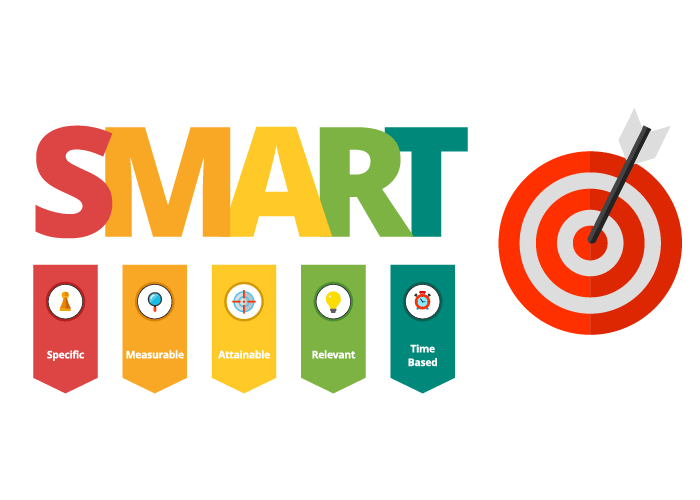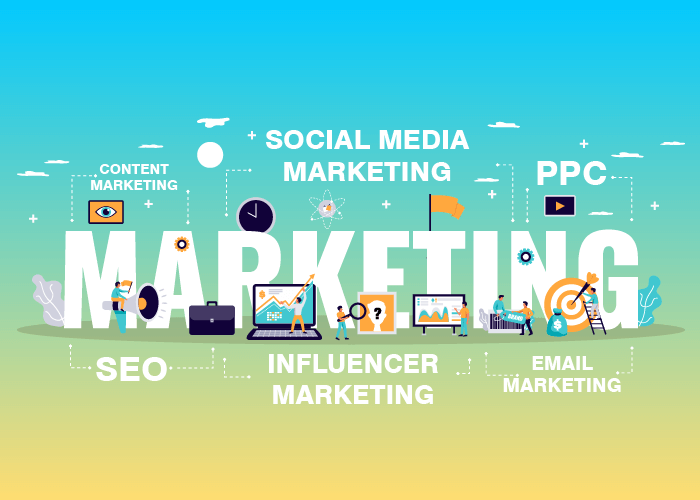Creating a digital marketing strategy takes time. It needs your attention and intense research to be a success.
The world is shifting from traditional marketing methods to digital ones. Therefore, a brand needs to have a digital marketing strategy.
We take no chances with the most critical decisions in life. One always weighs the pros and cons of a situation before choosing. This attitude, when applied to your business choices, helps develop your marketing strategy.
Digital marketing is a newer concept and needs the care to drive results. Here is all you will need to get your head in the game.
7 Steps to Create your Digital Marketing Strategy
1. Define your Brand Image

Today, there are thousands of products and services in the market. Chances are, your product/service has a competitor too. In such a case, it is vital to stand out.
What separates you from your competitor is your ‘brand.’ A brand is a unique mark that is specific to you alone. It may be your logo, tagline, symbol, or even a sentence. A combination of these elements sculpts your brand identity.
Brand Identity is a set of markers that help decipher your brand from your competition. If you create a suitable brand identity, it is like spotting the needle in a haystack.
With brand identity comes the brand image. It is of prime importance to know what the consumer thinks of your brand. After all, they are the ones who are engaging with it. A sharp brand image is pivotal to your digital marketing strategy.
If you know how your brand is perceived, strategizing around it generates accurate results. Let’s take, for example, Coca-Cola. One would never confuse Coke with any other soft drink. Its brand image is associated with happiness, joy, and a unique taste.
Because the brand is aware of its brand image, its campaigns and advertising are more relatable. Coca-Cola can, therefore, direct their marketing efforts to a specific public/target audience.
When you know what sets you apart, your messaging will be clearer. Thus, the first step to creating your digital marketing strategy is to define your brand image.
2. Know your resources and create SMART goals

Once you have your brand image, it time to set goals. Every digital marketing strategy should have a SMART goal. SMART stands for Specific, Measurable, Attainable, Relevant, and Timely.
S– Specifying your goals helps you pinpoint the areas that need a change or define the purpose of your marketing effort. The more specific your goal, the easier it is to meet.
M– Measurable goals are the ones that can be quantified. It means you must be able to evaluate your results in numbers. A quantifiable goal is more comfortable to monitor and analyze performance at every step.
A– Attainable means setting goals that you can surely achieve in real-time. Goals cannot be abstract and far-fetched. They must be short term and achievable.
R- Relevant goals mean your execution of the plan must be immediate. Different conditions will drive different results. Therefore, set goals that are relevant to the present situation.
T– Timely goals are short term goals. Put a time frame to your marketing efforts. When you set time-bound goals, monitoring and evaluation are precise.
For example, a SMART goal for Email marketing will be:
- Specific- Increase external links in your email
- Measurable- Increase click rate
- Attainable- Increase sales
- Relevant- To drive purchase/to build brand loyalty
- Timely- 3 months
With these goals set in place, evaluation becomes accurate, and attaining short term goals help you focus on each step as you grow.
3. Create Buyer Persona

Buyer Personas are fictitious characters of your target audience. Identifying your buyers helps to market your product/ service better.
Buyer personas should have the traits and attitudes of your target audience. How do you do that? – by conducting extensive research.
The research includes age, demographic, income, social status, geographic location, etc. The more in-depth your analysis, the more accurate your persona will be.
A Buyer Persona must answer some simple questions. Where does your consumer live? How old is he/she? And so on. Narrow down to the specific characters and give them names. Personalize them to an extent where you see the character come to life!
When your buyer persona is ready, test them under hypothetical situations. The more accurate your persona, the easier it is to gauge the reach of your brand.
With a buyer persona in hand, it enables you to choose the right platforms. Focus your digital marketing strategies on their internet surfing patterns.
4. Evaluate existing marketing channels

Before analyzing marketing channels, identifying them is crucial. Let’s classify these channels into Owned, Earned, and Paid media.
Owned media would be any digital assets your company owns. These include websites, social media handles, blogs, etc. In other words, owned media channels are things that the company can control.
Earned media stands for the publicity and recognition your company gained. It includes guest blogs, posts on other websites, PR, positive responses on social media, etc.
Paid media, as the name suggests, involves paying a fee to feature on a media platform. It consists of buying space to advertise on other websites, known as native marketing. Paid media is anything that you pay the price in exchange for visibility.
Once you make this distinction, chalk out your existing channels. After you evaluate these channels, you know what worked and what didn’t.
It helps you to assess your performance in comparison to the new digital marketing strategy.
5. Choose your Digital Marketing strategies wisely

Digital marketing strategies are tools that aid marketing on digital platforms. They include:
SEO Marketing:
Search Engine Optimization is a vital component of a digital marketing strategy. You need to optimize your site to rank on search pages. Search Engine Optimization puts your site on popular search engine results page, making you visible to the user. If they see you on the list, they visit your site, and you will see a spike in conversion and revenue.
PPC Marketing:
PPC stands for Pay Per Click. As the name suggests, you will have to pay a fee for every time someone clicks on your ad. This is a form of paid media that we discussed earlier. You buy visitors to your site as opposed to earning them. Whereas, SEO marketing allows you to appear on search engine results organically.
Content Marketing:
One must never underestimate the power of good copy. We read texts everywhere, and creating these literary pieces to drive sales is called content marketing.
Online posts, videos, blogs, etc. fall under the ambit of content marketing. It does not necessarily promote a brand, but sparks interests in the viewer’s mind.
Email Marketing:
Companies do not spam your inbox for no reason; there is a purpose behind it. Email marketing includes generating personalized emails and sending them to your inbox.
Not just texts, but these days we receive newsletters from companies we subscribed to. That, too, is an email marketing effort.
Social Media Marketing:
Social Media has now become a platform not just for entertainment but for promotions too. A significant chunk of society spends its time on social media.
Therefore, it is only wise to market your company on social media platforms. Create posts, contents, and build engagement and customer relations.
Influencer Marketing:
This is a rather contemporary phenomenon added to digital marketing strategies. With the rise of social media platforms, influencers or opinion leaders have been born.
Associating your brand and promoting your brand by these influencers help gain publicity. It is an ideal method to reach the younger generation who follow influencers keenly.
All these platforms cater to varied audiences and a combination of which can prove successful or disastrous. Digital marketing strategies must be chosen based on thorough research about your target groups. Their preference for consuming information will strongly affect your choice of medium.
6. Budgeting and Audit

An ideal budget for your digital marketing strategy is 7-10% of your total business revenue. While digital marketing strategies are cost-efficient, setting a budget will help you distribute the spending appropriately.
A budget gives you an idea of how much you need to spend on which strategy. With a pre-determined budget, you are free to break it and re-allocate wherever necessary.
You must also find the balance between how much you are willing to spend and how much the platform requires to create valuable results. Auditing your previous activities will help you make this choice.
Your digital marketing strategy should be crisp and accounted for before diving in. Additionally, a budget will help you measure your Return on Investment rate.
7. Measure results

You do not know if your digital marketing strategy worked unless you have results. Measuring results is crucial because it tells you how effective your marketing efforts have been.
Here are some metrics to help you measure your results.
Overall website traffic– Run your digital marketing strategy, and check your website traffic stats once the campaign is over. A before and after graph will give you a clear picture of whether your digital marketing strategy worked.
New Visitors and Returning Visitors– Evaluating your new visitors and returning visitors will help you identify what led them to your site. For example, which piece of content was so engaging that people kept coming back to you. And a growing number of visitors is evidence that your strategy is working.
Session Duration– Session refers to the time your visitor spends on your website. Keeping track of session duration helps you identify what is right and wrong with the user experience or UX.
Conclusions
Digital Marketing Strategies, when done right will work wonders for your brand. It is important for any strategy to be backed by research. With research you need to have a clear understanding of your consumer.
Digital Marketing Strategies must be consumer-centric. You must know the attitudes and behavior patterns of your consumer. This forms a base to your strategy and gives you direction.
The purpose of a digital marketing strategy is this. Give the consumers what they want and where they are most likely to engage with it

